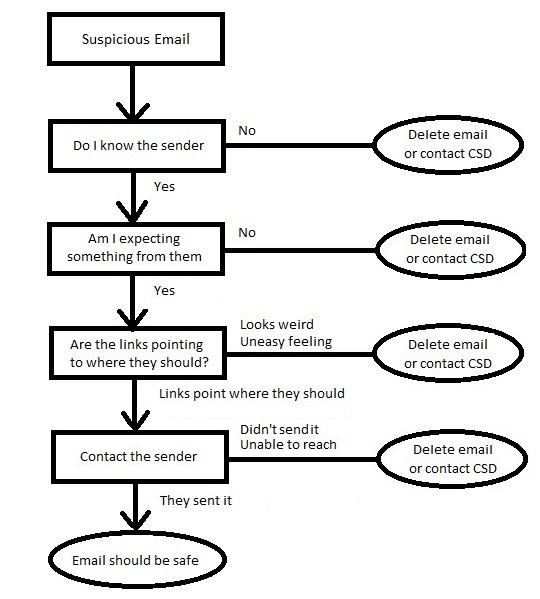From time to time, you might receive an email message that can look a little strange or something about the message causes you to wonder whether or not it is legitimate. Sometimes it is simply spam and sometimes the email may contain a virus/trojans. They could also be phishing emails or even the more dangerous spear-phishing emails.
Below is a simple procedure that we recommend everyone should follow to ensure that the email is legitimate before we click on links or provide information.

This may seem a little harsh, but the reality is that unsolicited email is dangerous. If the message is truly important, or you feel it might be valid, contacting the sender directly is the best way to make sure that the email is real. Otherwise, delete the messages and move on. If it is important they will contact you again and you can decide if you want to pursue it further.
How do I know who the email is from?
Remember that anyone can enter ANY address in the from Field. Like a mailed letter, I can write anything as a "returned address" and there is nothing in place to validate the return address is correct. BUT, if the email address is unknown, or it says it is from "bob" but the email address is "dorothy@company.com" these are signs that the sender is unknown.
I would say replying to the email should be a last resort. Email spammers send out thousands of emails, but they don't know for sure that all the email addresses are valid. If you reply to spammer or virus sender, you are basically saying "Hi. I am a real person." It is best to call the person or company whenever possible. Also, don't rely on links in the email for contact information. If the email is from a company, visit their website directly to find their contact information.
How do I check to make sure the links are valid?
DON'T click on them!! Hover your mouse over the link in the email and a pop-up bubble should appear with the actual link. If the two are different, then that is another suggestion that this is not a legitimate email. Also know that, for example, all RRU sites end with ".royalroads.ca". Any other domain, means it is probably not a valid RRU email or site.
